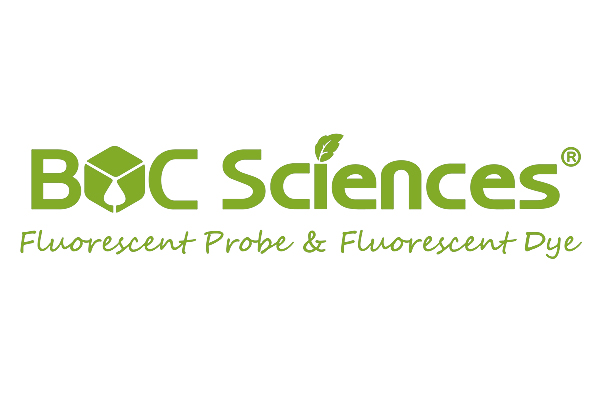
Lucifer yellow ethylenediamine | CAS 161578-11-6
| Catalog Number | A16-0083 |
| Category | Other Cell Fluorescent Probes |
| Molecular Formula | C14H11K2N3O8S2 |
| Molecular Weight | 491.58 |
* Please be kindly noted products are not for therapeutic use. We do not sell to patients.
Product Introduction
This amine-reactive dye conjugates easily with biomolecules for fluorescence labeling. It’s suitable for immunocytochemistry and microscopy.
Chemical Information
Application
| Synonyms | N-(2-Aminoethyl)-4-amino-3,6-disulfo-1,8-naphthalimide dipotassium salt |
| Canonical SMILES | C1=C(C=C2C3=C1C(=O)N(C(=O)C3=CC(=C2N)S(=O)(=O)[O-])CCN)S(=O)(=O)[O-].[K+].[K+] |
| InChI | InChI=1S/C14H13N3O8S2.2K/c15-1-2-17-13(18)8-4-6(26(20,21)22)3-7-11(8)9(14(17)19)5-10(12(7)16)27(23,24)25;;/h3-5H,1-2,15-16H2,(H,20,21,22)(H,23,24,25);;/q;2*+1/p-2 |
| InChIKey | DZLBCTJAVKJWJD-UHFFFAOYSA-L |
| Appearance | Solid Powder |
Lucifer yellow ethylenediamine (LYE) is a widely used fluorescent probe in cellular imaging, particularly in the field of neuroscience. This compound allows for the visualization of cellular structures and functions due to its high fluorescence intensity. Researchers utilize LYE to trace neuronal pathways and to study the morphology of neurons in both in vitro and in vivo settings. By injecting LYE into neurons, scientists can monitor the intricate networks formed by these cells, providing insights into neural connectivity and communication. The ability to observe these pathways in real time has significantly advanced our understanding of brain function and development.
Another crucial application of lucifer yellow ethylenediamine is in the study of cellular transport mechanisms. LYE serves as a marker for gap junctions, which are specialized intercellular connections that facilitate communication between adjacent cells. By employing LYE, researchers can assess the permeability and functionality of these gap junctions in various cell types. This application is vital for understanding how cells coordinate responses to stimuli and maintain homeostasis within tissues. Furthermore, investigations into gap junction dynamics using LYE contribute to our knowledge of diseases characterized by disrupted intercellular communication, such as cancer and cardiac disorders.
Lucifer yellow ethylenediamine is also instrumental in pharmacological studies, where it aids in assessing the effects of drugs on cellular processes. Its fluorescence properties make it an excellent tool for evaluating drug uptake, distribution, and efficacy within cells. For instance, researchers can utilize LYE to monitor how therapeutic compounds influence cell viability, proliferation, and apoptosis. This information is crucial for the development of new drugs and treatment strategies, as it enables scientists to identify promising candidates and optimize their formulations for better therapeutic outcomes. The use of LYE in pharmacological studies ultimately enhances our understanding of drug action at the cellular level.
Lastly, lucifer yellow ethylenediamine has applications in tissue engineering and regenerative medicine. In these fields, LYE is used to label stem cells and other cell types, allowing researchers to track their behavior and integration into host tissues. By visualizing the distribution and differentiation of labeled cells, scientists can evaluate the effectiveness of engineered tissues and their potential for therapeutic applications. This capability is particularly important in developing strategies for tissue repair and regeneration, as it provides essential insights into the mechanisms of tissue healing and integration. The role of LYE in these studies underscores its significance in advancing regenerative therapies and improving patient outcomes.
Recommended Services
Recommended Articles

- Hoechst Dyes: Definition, Structure, Mechanism and Applications
- Mastering the Spectrum: A Comprehensive Guide to Cy3 and Cy5 Dyes
- Fluorescent Probes: Definition, Structure, Types and Application
- Fluorescent Dyes: Definition, Mechanism, Types and Application
- Coumarin Dyes: Definition, Structure, Benefits, Synthesis and Uses
- Unlocking the Power of Fluorescence Imaging: A Comprehensive Guide
- Cell Imaging: Definitions, Systems, Protocols, Dyes, and Applications
- Lipid Staining: Definition, Principles, Methods, Dyes, and Uses
- Flow Cytometry: Definition, Principles, Protocols, Dyes, and Uses
- Nucleic Acid Staining: Definition, Principles, Dyes, Procedures, and Uses
Recommended Products
Online Inquiry










![6-[5-(Dimethylamino)-1-naphthylsulfonylamino]hexanoic acid succinimidyl ester](https://resource.bocsci.com/structure/217176-82-4.gif)


